Now that the weather is warmer and sunnier, the grass is green again and the flowers are in full bloom, it’s a great time to go hiking and camping again. It’s also the perfect time for different types of bugs to stretch their legs and wings and start looking for prey.
That’s why today we’re going to talk about ticks since they are especially active from April through September and one of their prey is…well, us! It’s not necessary for a tick bite to become an emergency, but many of them carry a lot of diseases from tick-borne meningoencephalitis to Lyme disease, a disease that it’s not only crippling but really hard to detect due to its confusing symptoms. That’s why ticks deserve a lot of attention, and that’s exactly what we’re gonna give them today.
We’ll discuss everything you need to know about how to avoid ticks while being outdoorsy this spring and summer, what to do in case one gets on you and how to deal with its bite in both a normal situation and in a post-SHTF scenario.
How to Avoid Ticks
As with any problem, the best thing you can do about tick-borne illness is to prevent it. So the first, and most important step is to do your best to avoid ticks in the first place.
That’s why when hiking, camping or bugging out, make sure to avoid walking through deep vegetation, high grass and leaf litter. Ticks have a porous outer cover, so they lose moisture rapidly. That’s why they prefer darker, humid places. You should also make sure to walk in the center of the trails as much as possible.
While hiking, camping or bugging out in places where ticks are present, you will want to take the following measures in order to avoid ticks:
- Wear bright colored clothing – while this will not keep ticks at distance, it will be easier for you to detect poppy-seed-sized nymph ticks that might later crawl on your skin to bite. Check for ticks regularly and immediately brush them off your clothes.
- Wear long trousers, tube socks and boots and tuck your trouser inside your socks. It won’t look pretty, but that’s not what you’re aiming for right now. In extreme situations, like highly infested areas, you can wrap some duct tape over the top of your ankles and around your wrists in order to seal any places where the ticks might crawl on your skin.
- Apply Permethrin to clothing, boots and hiking gear, but beware, as Permethrin products should never be used on skin. Permethrin is a pesticide and is sold under the names Permanone and Duranon and it remains active throughout several washings.
- Repellents that contain 20% to 30% DEET (N, N-diethyl-m-toluamide) can be used on exposed skin and clothing, offering protection for several hours. However they are said to be less efficient than Permethrin. DEET is also known to be toxic and possibly carcinogenic and is being used less and less in bug repellants. When applying any type of bug repellant on your skin or your kids’ skin, make sure to avoid the hands, eyes and mouth.
You can also use natural repellents such as:
- Diatomaceous Earth – It is said to be a great natural bug repellent without any toxic effects on humans, animals and plants. Spread it all over you lawn to help keep ticks and other bugs away.
- Lime – It has a similar effect, but it does affect the acidity of your soil, so keep that in mind before using it in your garden.
- A mix of lemon, orange, clove and lavender essential oils. There are many recipes online that you can try and test. Some are kid friendly so keep that in mind if you have little ones running all over the lawn.
Another thing to take into consideration is that ticks can get to your yard easily, increasing your chances of picking them up long after you took a hike or a stroll in the park. If your yard is close to the woods, make sure to use landscaping to set a barrier zone between the two. Use wood chips or gravel in order to create a separating zone. You will also want to discourage unwelcomed visitors (such as deer, raccoons, mice, rats or stray dogs) by fencing your garden.
Although it may sound like a no-brainer, if the risk of tick infestation is high, you will want to use pesticide in order to control the infection. The pesticides used against ticks are called acaricides and are best used in April in order to control the nymphal I. scapularis ticks, which are the most likely to transmit Lyme disease. You can also apply pesticides in October in order to control adult black legged ticks, but they are less likely to transmit diseases once they reach that stage.
If you have pets, they will also easily pick up ticks from walking through high grass when hiking or running in the park, or from interacting with infested pets. Make sure to ask your vet to check your pet for ticks during each visit, but also check them yourself daily at home and immediately remove any tick that you find. Ask your vet for tick preventives you could use on your pet.
How to Check if You Picked Up Any Ticks
As I mentioned earlier, you should check to see if there are any ticks on your clothes while you’re out and about and brush them off immediately. But you also must check as soon as you get to your home or shelter to see if any ticks passed through the clothing barrier and are attached to your skin.
Ticks prefer dark humid places so make sure to check the following spots using a hand held mirror and enlisting someone’s help if there are any spots you can’t reach:
- Your hair
- Behind and in your ears
- Armpits
- Wrists
- Bellybutton
- Between your legs
- Behind your knees
- Waist area
People who shower right after taking a hike are said to be less likely to catch diseases from ticks, as they will find them earlier, before the tick has had a chance to feed and infect its host. Make it a habit to jump in the shower and check your skin as soon as you come home from hiking.
How to Remove a Tick
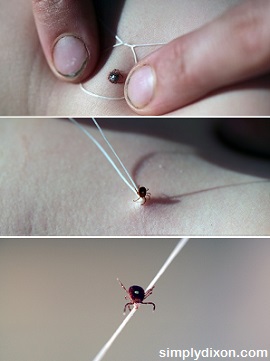
Removing a tick without paying proper attention might result in either leaving its mouth inside your skin or make it vomit, both of which will highly increase your chances of getting infected.
Ideally you should have someone handy who’s done this before or even see your doctor to have it removed. But in a survival scenario neither might be the case so here’s what you should do:
- Use a tick removing utensil (if you have one) or tweezers to grasp the tick firmly as close to the skin as you can.
- Pull gently to remove the tick. Do not twist or rock it from side to side.
- If part of the tick stays in the skin, try to remove it with the tweezers. If you are not able to do that, leave it alone allowing the skin to seal it and heal, but keep an eye on the spot as it might become infected.
- Keep the tick into a jar or zip-locked bag in case you want to have it identified later on. Place a moist tissue over it to avoid it dehydrating. If the tick dehydrates it will be close to impossible to have it tested later.
- Thoroughly disinfect your hands and the area with rubbing alcohol, iodine or soap and water.
Of course, these are the official guideline that you’ll find all over the place when you’re searching for this type of information. However, in a SHTF situation you might not have everything on hand, like tweezers let alone a tick removing utensil. But there are other options too:
- Use a thread or floss to create a loop around the tick’s head. Tighten it around the tick’s mouth (right where it meets your skin) and gently pull the thread or floss. The tick will release after applying pressure for a little while.
- Another method we researched is using a wet matchstick. This method has been used in several parts of the world, before people started wondering which method is toxic to the tick or not. It seem however that this one is effective not because it harms the tick in any way (thus making it vomit and infect its host), but because ticks are drawn to the smell of wet phosphorus. All you have to do is wet a matchstick and draw circles around the tick. It will eventually come off and climb on the matchstick.
How NOT to Remove a Stick.
When it comes to removing ticks there are a lot of wives’ tales, but many have been proved to do more harm than good. Here are a few myth busters that will make you think twice before trying the first thing you can find on the Internet.
- Burning the tick with a match or a cigarette. Though the tick might come off, it is also more likely to release its saliva into your bloodstream, increasing the chances of becoming infected.
- Covering the tick in petroleum jelly, nail polish, any other greasy, slimy or suffocating chemical substance. The purpose here is to have the tick suffocate, making it release from your skin. And while, again, this might work in making it come off, it will increase your chances of getting infected.
- Grabbing and pulling the tick with your nails or fingers. This is not a good idea at all, first because you will not be able to grab the tick close enough to the skin, so you will likely squish it making it squirt its saliva into your bloodstream. And second, you can get infected through any crack in the skin on your fingers.
- Credit card method. This is another method we discovered that is suggested on the Internet, but the thing is you have to hold and press the tick in place, which I think might lead to squishing it or pulling it out while leaving the head under your skin, so I would personally steer clear from this method too.
Signs of Infection, Treatment and Natural Remedies
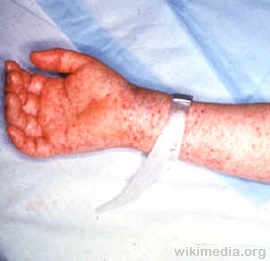
However if it looks serious and it doesn’t go away with some local disinfectant you should see your doctor about it.
Other than finding the tick on your skin, there are some signs that your bite might come from a tick and that it caused an infection:
- A red bump ringed by a red circle, which looks like a bull’s-eye (an indicator of Lyme disease)
- Red dots on the ankles and wrists (symptoms of Rocky Mountain spotted fever)
- Flu-like symptoms (fever, headache, fatigue, vomiting, muscle and joint aches)
If any of these symptoms appear, you should see your doctor who will prescribe you the right treatment. However in a SHTF scenario a doctor’s opinion may not be available for days, weeks or even more so at the first sign of illness the
treatment recommended is as it follows:
Lyme disease: if you spot the specific bull’s-eye bite you can start taking antibiotics. The ones usually recommended are: doxycycline, amoxicillin, or cefuroxime axetil. In general, the dosage used for adult is doxycycline 100 mg orally
twice daily or amoxicillin 500 mg orally three times daily for 20 to 30 days. Doxycycline should not be used in children under age nine years or pregnant women.- Rocky Mountain Fever: Doxycycline is the first line treatment for adults and children of all ages.
The dosage recommended for adults is of 100 mg every 12 hours, while for children under 45 kg (100 lbs): 2.2 mg/kg body weight given twice a day. Patients should be treated for at least 3 days after the fever subsides; the standard duration of treatment is 7-14 days.
There are proponents of natural medicine who are saying Lyme disease can be cured through natural remedies. But given the fact that it’s an infection, and in a post-SHTF scenario you must make sure you recover as soon as possible, rather than in time, I would use see the natural remedies as adjuvant rather than sole treatment.
If you have other tips on how to keep ticks away or safely remove them from your skin, please share them with us in the comments section below!
This article has been written by Brenda E. Walsh for Survivopedia.


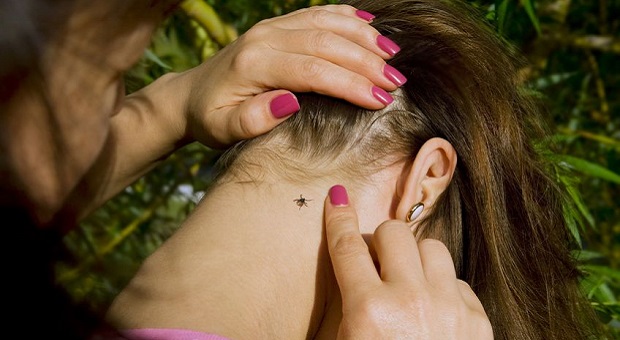
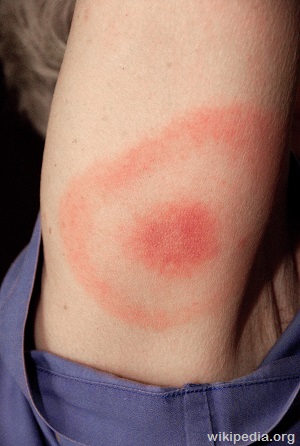 Lyme disease: if you spot the specific bull’s-eye bite you can start taking antibiotics. The ones usually recommended are: doxycycline, amoxicillin, or cefuroxime axetil. In general, the dosage used for adult is doxycycline 100 mg orally
Lyme disease: if you spot the specific bull’s-eye bite you can start taking antibiotics. The ones usually recommended are: doxycycline, amoxicillin, or cefuroxime axetil. In general, the dosage used for adult is doxycycline 100 mg orally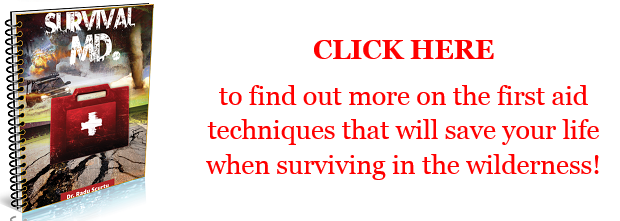
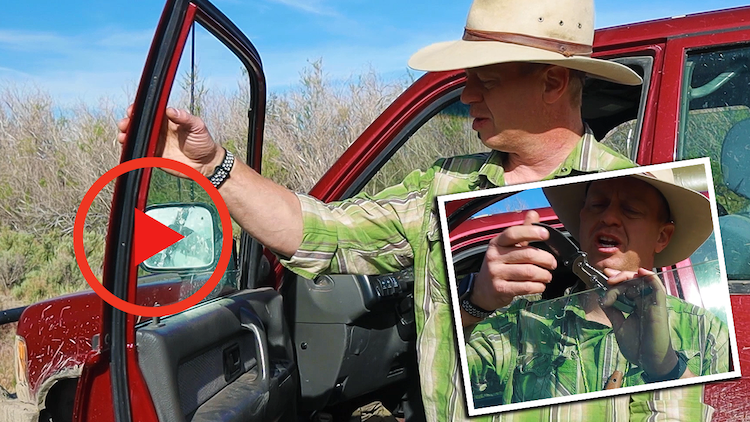
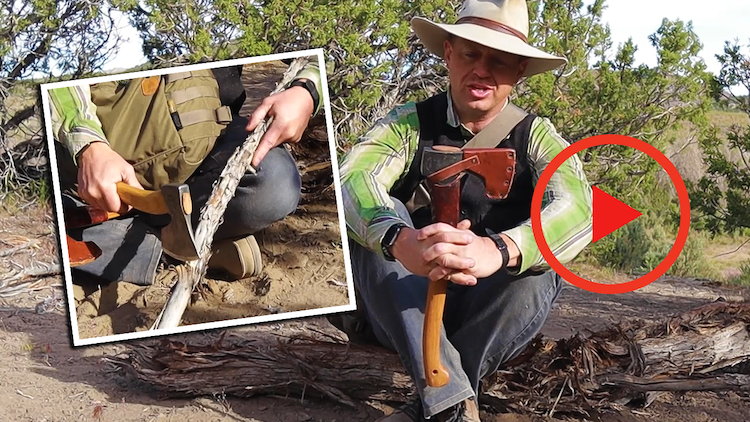



William | May 4, 2015
|
Another way we keep ticks and chiggers from hitching a ride is to powder your socks and pants legs with sulfur powder. It’ cheap and easy to find. Some people are allergic, so pay attention if you use it.
Anne | May 4, 2015
|
When I contracted Lyme disease, a red “target” was not found and neither was the tick, but the Connecticut physicians were well versed on Lyme disease! I can tell you it was horrible 4 to 6 weeks. First came creaking neck, then joints. Next came a pain in my heel when I tried to walk. Next came extreme fatigue, then feeling as if I had a bad case of the flu. These all appeared over a period of about a week to a week and a half. Three weeks of triple antibiotics allowed me to get well, but did NOT save me from the bedridden time inbetween. Please do not hesitate to question your doctor if you have these symptoms during tick season. Immediate antibiotics can help shorten the ill effects.
renee | May 5, 2015
|
We have also successfully kept ticks away with rose geranium essential oil. One drop on the wrists, and one drop behind the ears or neck. We do this daily, and now we are pulling ticks off ourselves.
Its also safe for cats and dogs.
And it doesn’t have the horrible smell.
Polly Murray | August 17, 2017
|
Hi – I clicked the wrong button – I meant to LIKE, and was wondering why 2 others didnt! when you say you ‘are’ pulling ticks off yourselves, does that mean its not working?did you mean ‘aren’t’?
My husband has Lyme, and anything anyone can do to reduce the incidence of a tick bite has to good.
Pingback:4 Snakes To Beware Of In American Wildernessdisasterdefense.us | disasterdefense.us | May 8, 2015
|
Pingback:Deadliest Snakes in North America • Survival Atlas – The Trusted Source for Everything Survival | May 16, 2015
|
Pingback:Danger In The Grass: How To Survive Tick Season - Apocalypse Supplies | May 23, 2015
|
Pingback:4 Snakes To Beware Of In American Wilderness | Survivopedia | June 22, 2016
|
Pingback:13 Multi-Use Survival Items You Can Find At The Dollar Store | Prepper's Survival Homestead | July 15, 2016
|
Rob in Kentucky | November 26, 2021
|
I made the mistake of pulling a tick off me and parts of the ticks mouth got left in my skin which turned into a tick bite granuloma and later got rabbit fever (a bacterial infection on the blood stream from the tick. The granuloma area itched like crazy. Dr. gave me a salve which was worthless. What cured the granuloma in 3 days was Dr. Watkins Petro-Carbo Salve. Had to take antibiotics for the rabbit fever.
After removal of a tick, apply one drop of thieves oil or oregano oil to the bite area to increase your chances of NOT getting a disease for the tick.
Never pull a tick off!